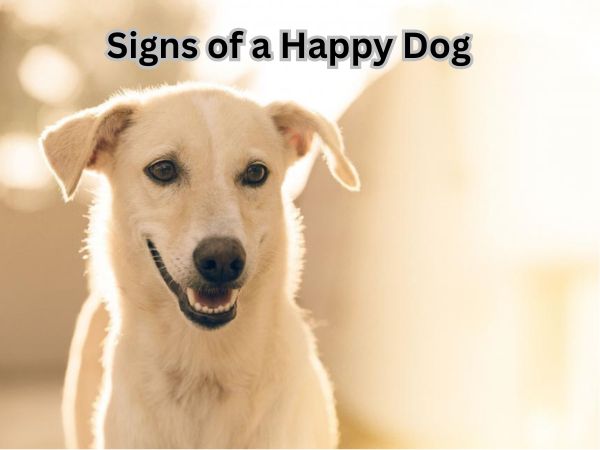Signs of a Happy Dog: 6 Shocking Truths Revealed

Did you know that 73% of dog owners completely misinterpret their pet’s emotional signals, often mistaking stress behaviors for happiness? That wagging tail you think means pure joy could actually be your dog’s way of saying they’re overwhelmed or anxious. Understanding the true signs of a happy dog isn’t as straightforward as most people believe, and the misconceptions run deeper than you might imagine. What if everything you thought you knew about your furry friend’s happiness was wrong?
In this eye-opening article, we’ll reveal six shocking truths about dog behavior that will completely transform how you read your pet’s emotions. These aren’t the typical “tail wagging means happy” clichés you’ve heard before – these are the subtle, often overlooked pet happiness indicators that veterinary behaviorists use to assess genuine canine contentment. Prepare to discover the real story behind your dog’s behavior and learn to truly connect with your four-legged companion on a deeper level.
Truth #1: A Wagging Tail Doesn’t Always Mean Happiness
Many pet owners believe that any tail wag equals a happy pup, but this isn’t always true. Understanding your dog’s tail language is crucial for reading their emotions correctly.
Context-Dependent Tail Wagging
Your dog’s tail tells a story, but you need to look at the whole picture. The speed, height, and direction of the wag all matter. A wagging tail can actually signal different emotions depending on the situation.
Happy Dog Tail Position vs. Other Emotions
Signs of a truly happy tail wag:
- Loose, relaxed wagging from side to side
- Tail held at medium height (not too high or low)
- Wide, sweeping motions
- Often accompanied by a relaxed body and soft eyes
Warning signs to watch for:
- High, stiff tail – This can mean alertness or even aggression
- Slow, controlled wag – Your dog might be uncertain or cautious
- Low tail with quick wags – Could indicate anxiety or submission
- Tail wagging only to the right – Research shows this might mean positive emotions
- Tail wagging only to the left – This could signal negative feelings
Reading the Whole Dog
Don’t just focus on the tail. Look at your dog’s entire body language:
- Ears: Are they relaxed or pinned back?
- Eyes: Soft and squinty means happy; hard stare means something else
- Body posture: Loose and wiggly suggests joy; tense means otherwise
- Mouth: A slightly open, relaxed mouth often shows contentment
Remember, every dog is different. Spend time learning your specific dog’s unique signals. What looks like happiness in one dog might mean something completely different in another. When in doubt, consider the context of the situation and trust your instincts about your furry friend’s mood.
Truth #2: Happy Dogs Show Their Belly for Surprising Reasons
When you see your dog rolling over and exposing their belly, your heart probably melts. Most pet owners think it’s just an adorable request for belly rubs. But there’s so much more happening beneath the surface when your dog is showing belly.
The Ultimate Sign of Trust
Belly exposure is about vulnerability. Your dog’s belly is their most defenseless area. No protective ribs, no thick fur, just soft skin covering vital organs. When your furry friend flops down and shows you their tummy, they’re basically saying, “I trust you completely with my life.”
This behavior goes back to their wild instincts. In the dog world, showing your belly to another dog can mean:
- Complete submission
- A peace offering during play
- “I’m not a threat”
But when your dog does this with you? That’s pure love and trust.
More Than Just “Pet Me Please”
Sure, many dogs love belly rubs. But dog rolling over behavior serves other purposes too:
- Temperature regulation – Cool floor = happy, cool belly
- Stretching – Just like we stretch our backs, dogs stretch their spine
- Play invitation – “Come play with me, human!”
- Attention seeking – “Look how cute I am!”
Reading the Body Language
Not every belly exposure means the same thing. Watch for these clues:
Happy Belly Show
- Relaxed, wiggly body
- Tail wagging
- Soft, happy eyes
- Maybe some playful pawing
Stressed Belly Show
- Tense, still body
- Tucked tail
- Avoiding eye contact
- Might be panting or drooling
The key difference? A happy dog chooses to show their belly. A stressed dog feels forced to submit.
How to Respond the Right Way
When your dog shows you their belly:
- Move slowly – Sudden movements can startle them
- Let them guide – Some dogs want rubs, others just want to stretch
- Watch their signals – If they tense up, give them space
- Keep sessions short – Even happy dogs can get overstimulated
Remember, this vulnerable position means your dog sees you as their safe person. That’s a pretty amazing compliment from your four-legged family member!
Truth #3 Soft Eye Contact Is More Important Than You Think
When it comes to understanding your furry friend, dog eye contact tells a powerful story. You might think all eye contact is the same, but there’s a world of difference between your dog’s soft, loving gaze and an intense stare.
The Magic of Relaxed Dog Eyes
Relaxed dog eyes are like a warm hug in visual form. Here’s what to look for:
- Soft, squinty eyes – Almost like your dog is smiling with their eyes
- Slow, deliberate blinks – This is your dog’s way of saying “I love you”
- Relaxed eyelids – Not wide open or tightly shut
- Gentle, brief glances – Your dog looks at you, then looks away naturally
Why Soft Eyes Matter
Think about it this way: when you’re comfortable with someone, you don’t stare them down. The same goes for your dog. Soft eye contact shows:
- Trust and affection – Your dog feels safe with you
- Contentment – They’re relaxed and happy in the moment
- Emotional connection – You’ve built a strong bond together
Hard Stares: A Different Story
Not all eye contact is good news. A hard stare can signal:
- Stress or anxiety
- Guarding behavior
- Feeling threatened
- Overstimulation
What You Can Do
Build positive eye contact with these simple steps:
- Practice slow blinks when your dog looks at you
- Speak softly during gentle eye contact moments
- Reward calm behavior with treats or praise
- Respect their space if they look away
Remember, every dog is different. Some are naturally more eye-contact oriented, while others prefer to show love in different ways. The key is learning your dog’s unique language of happiness.
When your dog gives you those soft, loving eyes, you’ll know you’re doing something right. It’s one of the clearest signs that your four-legged friend is genuinely happy and content.
Truth #4 – Destructive Behavior Can Actually Indicate Contentment
Here’s something that might shock you: that chewed-up shoe or torn couch cushion doesn’t always mean your dog is anxious or upset. Sometimes, destructive behavior actually signals a happy, content pup. This counter-intuitive truth catches many pet owners off guard.
Why Happy Dogs Sometimes Destroy Things
Playful Energy Release
When dogs feel secure and joyful, they often express this through:
- Enthusiastic play sessions
- Exploring their environment with their mouths
- “Redecorating” your home in creative ways
A truly happy dog might grab your favorite slippers not out of spite, but because they’re feeling so good they want to engage with something that smells like their beloved human.
The Comfort Factor
Dog destructive behavior can stem from pure contentment when:
- Your dog feels so at home they treat your space as their playground
- They’re comfortable enough to let their guard down completely
- They associate certain items with positive memories of you
Signs This Destruction Comes From Happiness
Look for these telltale indicators that the mess comes from joy, not distress:
- Tail wagging while “destroying” items
- Playful body language – bouncy movements, play bows
- Bringing items to you as if presenting gifts
- No signs of stress like panting, pacing, or hiding
What This Really Means
When your dog shreds tissues or rearranges your throw pillows, they might be saying: “I love this place so much, I want to make it even more fun!” It’s their way of adding their personal touch to your shared space.
The key difference? Happy destructive behavior feels celebratory, while anxiety-driven destruction feels frantic or desperate.
Managing Happy Destruction
Remember, even joyful destruction needs boundaries. Redirect that happy energy into appropriate outlets like puzzle toys, chew bones, or designated play areas. Your dog’s contentment is wonderful – you just need to channel it constructively!
Signs of a Happy Dog: Truth #5 – Food Behavior Reveals Deep Emotional States
Ever notice how your own eating habits change when you’re stressed or excited? Dogs are no different! A happy dog’s appetite tells a beautiful story about their emotional well-being. When your furry friend is content and secure, their relationship with food becomes a joyful, predictable routine.
What Happy Dog Eating Behavior Looks Like
Consistent Meal Times
- Shows up eagerly at feeding time
- Maintains regular eating schedule
- Finishes meals at a steady pace
- Shows excitement (but not anxiety) around food
Healthy Food Enthusiasm
A content dog approaches their bowl with:
- Tail wagging and bright eyes
- Normal chewing pace – not gulping frantically
- Interest in treats during training
- Willingness to “work” for special snacks
Balanced Food Emotions
Happy dogs display:
- Calm confidence around their food bowl
- No resource guarding or food anxiety
- Ability to be interrupted while eating without stress
- Normal drooling and anticipation before meals
When Dog Eating Behavior Signals Unhappiness
Watch for these concerning patterns:
- Sudden loss of appetite
- Eating too fast from anxiety
- Hiding food or treats
- Refusing favorite snacks
- Dramatic changes in meal routine
Building Positive Food Relationships
Create Mealtime Joy
- Establish consistent feeding schedules
- Use positive associations with food
- Make mealtimes calm and peaceful
- Celebrate their healthy appetite
Watch the Subtle Signs
Your happy dog’s appetite isn’t just about quantity – it’s about their whole approach to food. A truly content pup sees mealtime as another wonderful part of their day, not a source of stress or competition.
Remember, sudden changes in eating habits can signal health issues too. When in doubt, check with your vet to rule out medical causes before addressing emotional factors.
Truth #6: Sleep Patterns Are the Ultimate Happiness Indicator
Did you know that watching your dog sleep can tell you everything about their emotional state? A happy dog sleeping is one of the most beautiful sights for any pet owner. When your furry friend is truly content, their sleep patterns reveal the secret to their inner peace.
How Content Dogs Sleep Differently
Happy dogs have distinct sleep behaviors that set them apart from stressed or anxious pups. Here’s what makes their slumber so special:
Deep, Restful Sleep
- Content dogs fall asleep quickly and stay asleep longer
- They don’t startle awake at every small sound
- Their breathing becomes slow and steady
- You’ll notice peaceful facial expressions, not tense or worried looks
The “Superman” Position
- Happy dogs often sleep sprawled out on their backs
- Belly exposed means they feel completely safe
- Paws may dangle freely in the air
- This vulnerable position shows total trust in their environment
Relaxed Body Language During Rest
When observing dog sleep behavior, look for these telltale signs of happiness:
Physical Indicators:
- Loose, floppy ears
- Relaxed jaw and tongue
- Limbs positioned naturally, not tucked tight
- Slow tail movements during dreams
- Gentle sighs and content sounds
Sleep Location Choices:
- Happy dogs sleep where the family gathers
- They choose comfortable spots without hiding
- Often sleep near their favorite humans
- May change positions freely throughout the night
What Unhappy Sleep Looks Like
To better understand happy dog sleeping patterns, it helps to recognize the opposite:
- Restless tossing and turning
- Sleeping in isolated or hidden spots
- Frequent wake-ups and alertness
- Tense, curled-up body positions
- Excessive panting or whimpering during sleep
Creating the Perfect Sleep Environment
Help your dog achieve those blissful sleep patterns:
Comfort Essentials:
- Provide a cozy, clean sleeping area
- Maintain a comfortable room temperature
- Ensure the space feels safe and secure
- Consider a favorite blanket or toy nearby
Remember, a well-rested dog is typically a happy dog. When you see your pup sleeping peacefully with that adorable belly-up pose, you’ll know you’re doing something right as their loving owner.
Classic Happy Dog Body Language
Signs of a Happy Dog- Understanding when your furry friend is truly happy can make all the difference in your relationship. Dogs communicate their emotions through body language, and learning to read these signals helps ensure your pup lives their best life.
A genuinely happy dog shows several telltale signs:
- Relaxed body posture – loose muscles, no stiffness
- Soft, bright eyes – not staring or showing the whites
- Gentle tail wagging – mid-level position, loose movement
- Play bow – front end down, rear up, inviting fun
- Bouncy, wiggly movements – whole body expressing joy
- Mouth slightly open – relaxed jaw, maybe tongue hanging out
Red Flags: When These Signs Don’t Mean Happiness
The Tricky Tail Wag
Not all tail wags mean happiness. Watch for these stressed dog signs:
- High, stiff tail wagging – signals alertness or potential aggression
- Rapid, small wags – often shows nervousness
- Tail tucked while wagging – indicates fear mixed with attempted friendliness
Context matters: A dog wagging at the vet might be trying to appease, not celebrating.
Panting Doesn’t Always Mean Content
While dogs pant when relaxed, excessive panting can signal anxious dog behavior:
- Heavy panting indoors when it’s not hot
- Panting with other stress signals like pacing or whining
- Sudden panting changes in familiar situations
Exception: Some dogs naturally pant more due to breed characteristics or medical conditions.
The “Smile” Confusion
That adorable “grin” might actually be stress-related:
- Lip licking when no food is present
- Yawning in non-tired situations
- Showing teeth with tense body language
Real happiness: A truly relaxed dog has a soft, slightly open mouth without tension around the eyes or forehead.
When to Be Concerned
Trust your instincts if something feels off. Anxious dog behavior often includes:
- Excessive vocalization in normal situations
- Destructive behavior when left alone
- Changes in eating or sleeping patterns
- Avoiding interaction or hiding
Remember, you know your dog best. Small changes in their usual happy signals might indicate stress, illness, or discomfort that needs attention.
Conclusion: Reading Your Dog’s Happy Signals
Understanding the signs of a happy dog isn’t just about being a good pet parent – it’s about building a stronger bond with your furry friend. When you know what to look for, you’ll discover that dogs communicate their joy in countless ways, from the obvious tail wags to the subtle body language cues.
Your Next Steps
Start observing your dog today. Notice their unique happy signals and respond positively when you see them. The more you understand your dog’s happiness language, the better you can ensure they’re living their best life. Remember, a happy dog makes for a happy home – and that joy is absolutely contagious.
FAQ
What are the main signs of a happy dog?
A happy dog wags its tail, relaxes its body, makes eye contact, and enjoys playtime. They often follow you, sleep comfortably, and show curiosity. A cheerful dog eats well, greets you warmly, and looks relaxed instead of stressed or tense.
How do I know if my dog is truly happy?
You can tell your dog is truly happy when they show playful energy, wag their tail loosely, and enjoy spending time near you. Happy dogs often cuddle, have soft facial expressions, and respond well when you call or interact with them.
What sounds does a happy dog make?
A happy dog may make soft barks, playful growls, or gentle whines when excited. They also sigh or grunt when relaxed. Unlike stressed dogs, happy dogs’ sounds are calm, friendly, and show they feel safe and content around you.
Do happy dogs smile?
Yes, happy dogs often “smile” by opening their mouth slightly with relaxed lips and a soft face. This look is different from aggressive teeth-baring. A smiling dog looks calm, wags its tail, and may even tilt its head with joy.
How can I make my dog happier?
You can make your dog happier by giving daily walks, healthy food, and playtime. Offer toys, mental challenges, and plenty of love. Regular vet visits and a safe, calm home also keep dogs comfortable, secure, and happy with you.



